Prior to moving further with my Pet Projects, I'm building tools I've wanted for years. The remote db manager replaces an existing 3rd party package I was using, but the others are not something I've had before. Having customizable, modular tools like these in my toolbox enables me to develop complex business systems with the lowest development and maintenance costs of any platform. The screen shots below are taken from a prototype site I'm using just for the development of these tools, so the menu on the left has lots of test links in it and is not clean and organized as would be found in a finished system.
== Remote Database Admin System ==
The DB admin system can be accessed from within the business management system and unlike the prior 3rd party solution, mine keeps the same look and feel of my systems. It is a small directory of self contained scripts. No install and no registration required. The prototype is being built with MS Access mdb's and accdb's, but with small modifications it will also work with SQLServer and MySQL dbs. This can be a stand alone remote db management tool (it does not have to run in conjunction with my business systems). More pics coming soon, as there is much more functionality than is depicted in this photo.
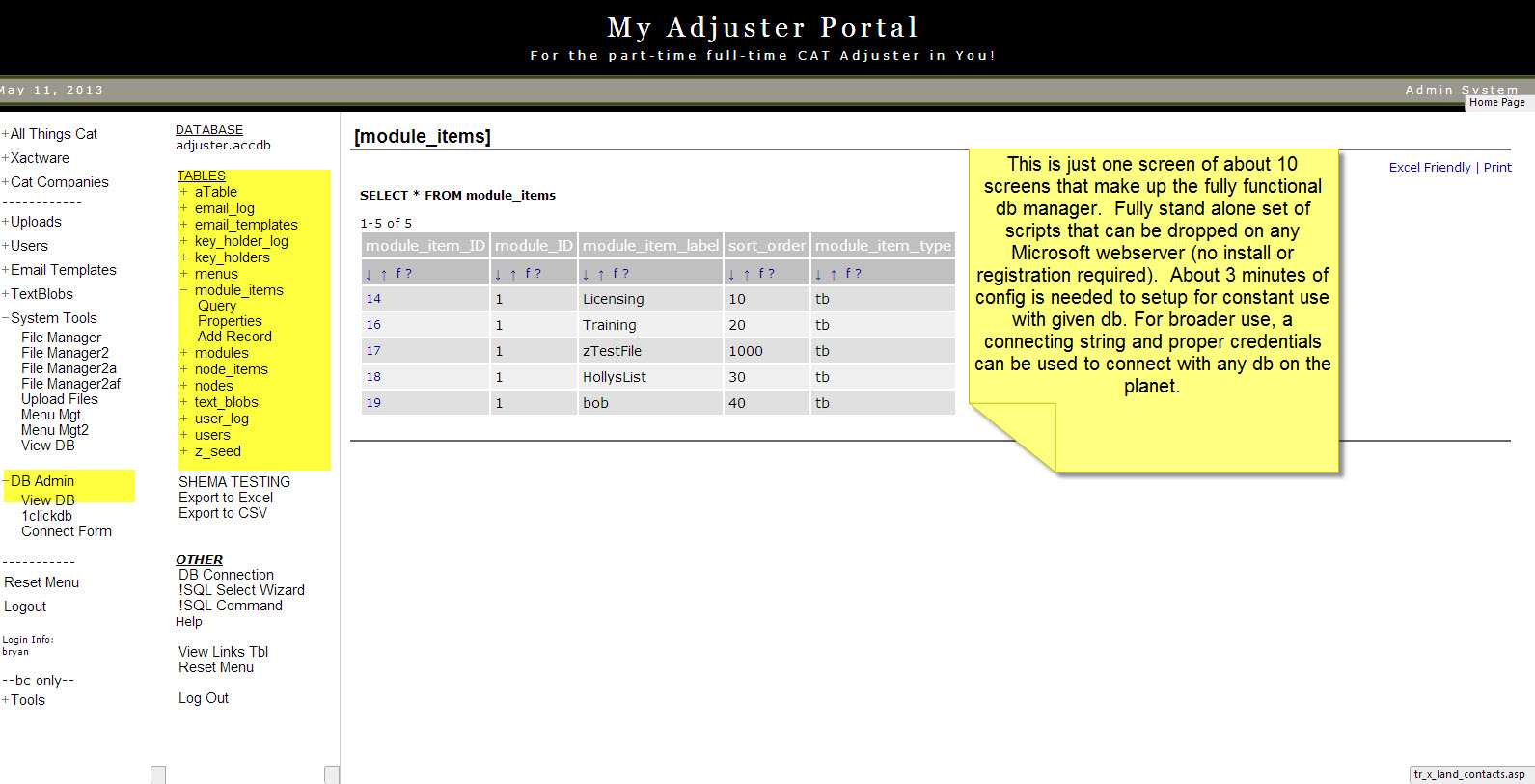
== Remote File Management System with built in Text Editor and File
Preview ==
The remote file management system can be configured to start with any folder as
a virtual root. It has two modes, a 4 pane and 5 pane mode. The first
picture shows the 5 pane mode (includes a folder tree on left), the rest are 4
pane mode pics, which works just as well and provides more preview/editing space.
File manager w/ left folder tree while previewing/editing text file w/ autosave
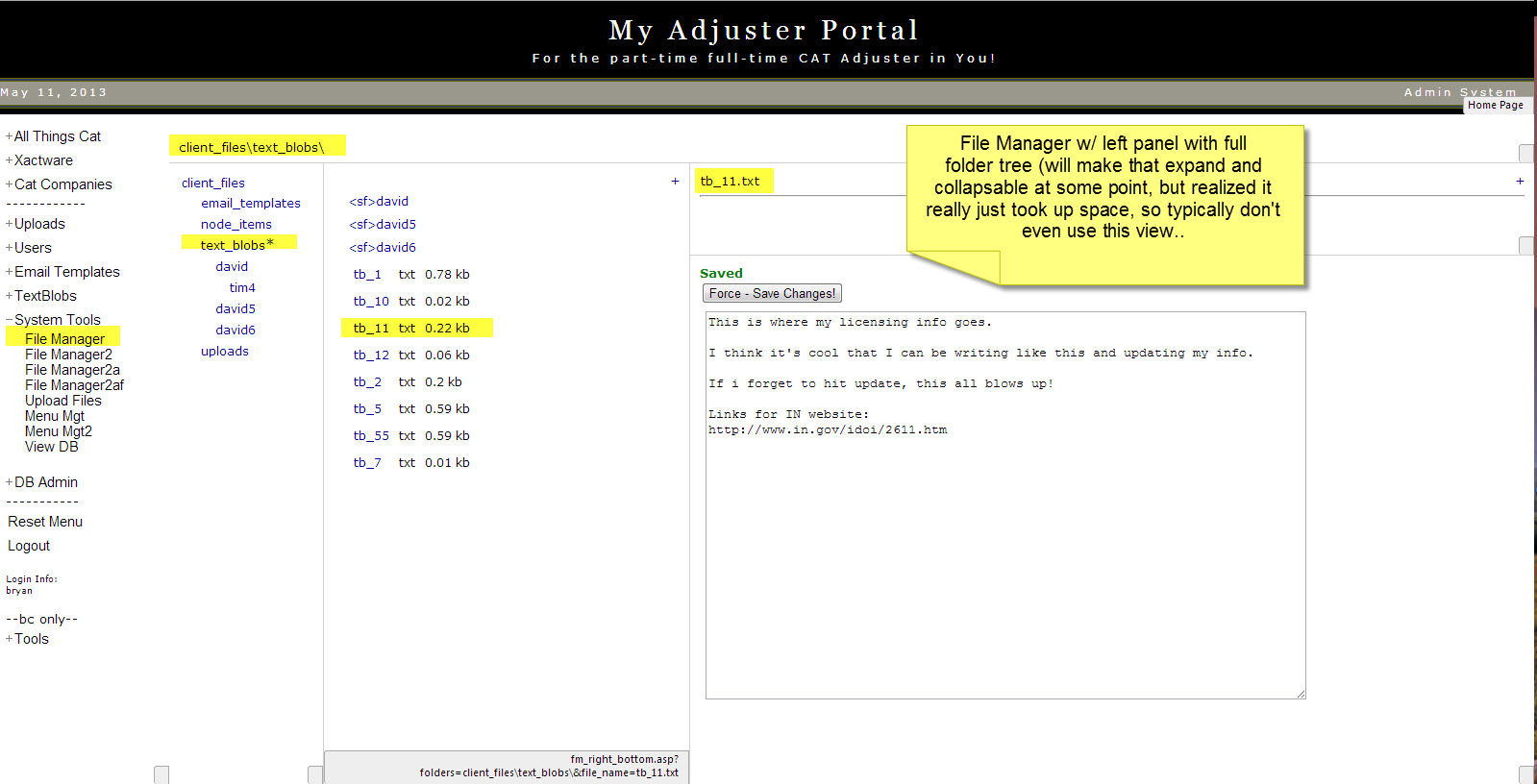
File manager previewing/editing text file w/ autosave (can be text,
html, css, asp, log files etc). The options menus for the folder and the file are
expanded in this photo.
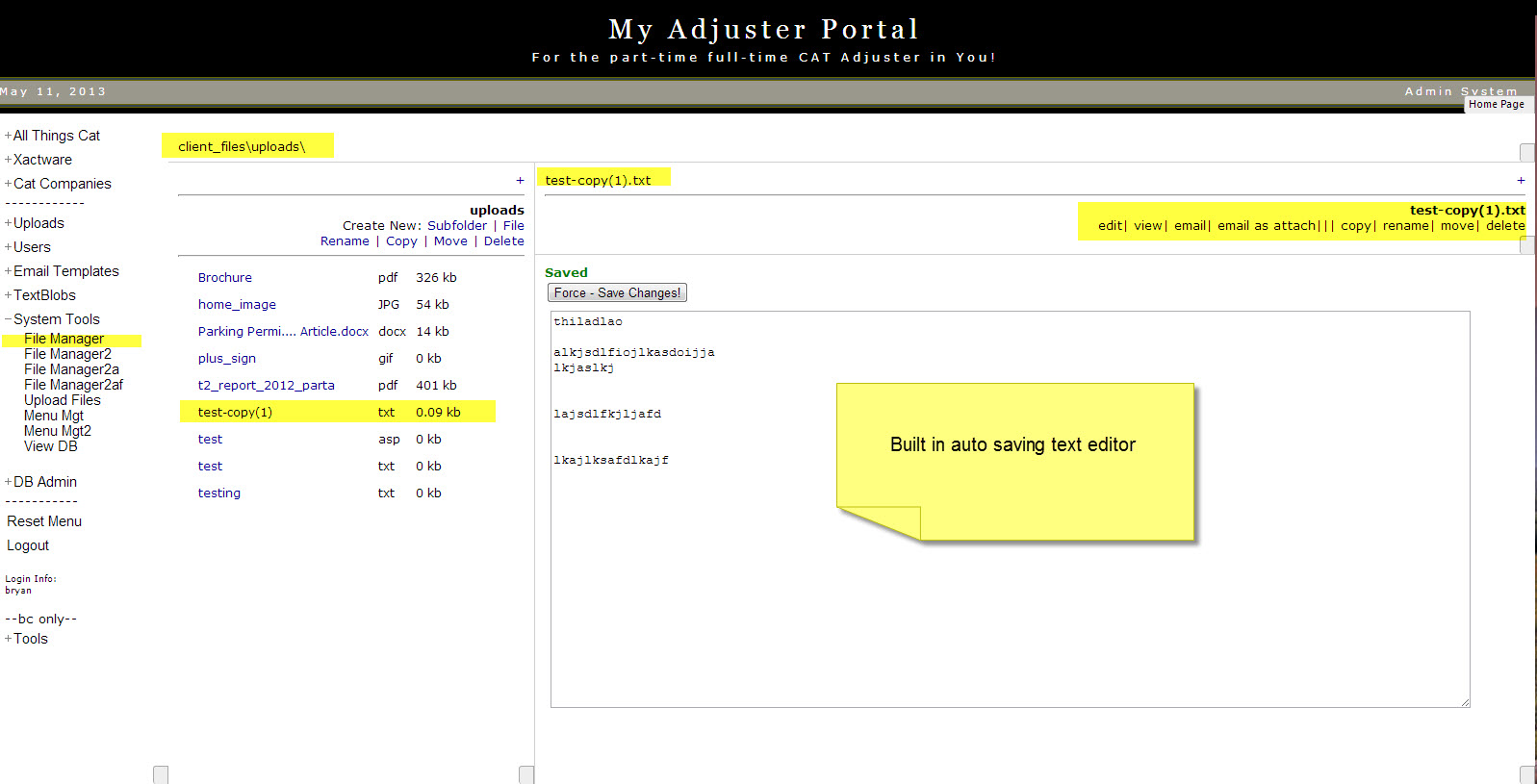
File manager previewing pdf. Because its in a separate frame, all standard
browser pdf viewing capabilities exist.
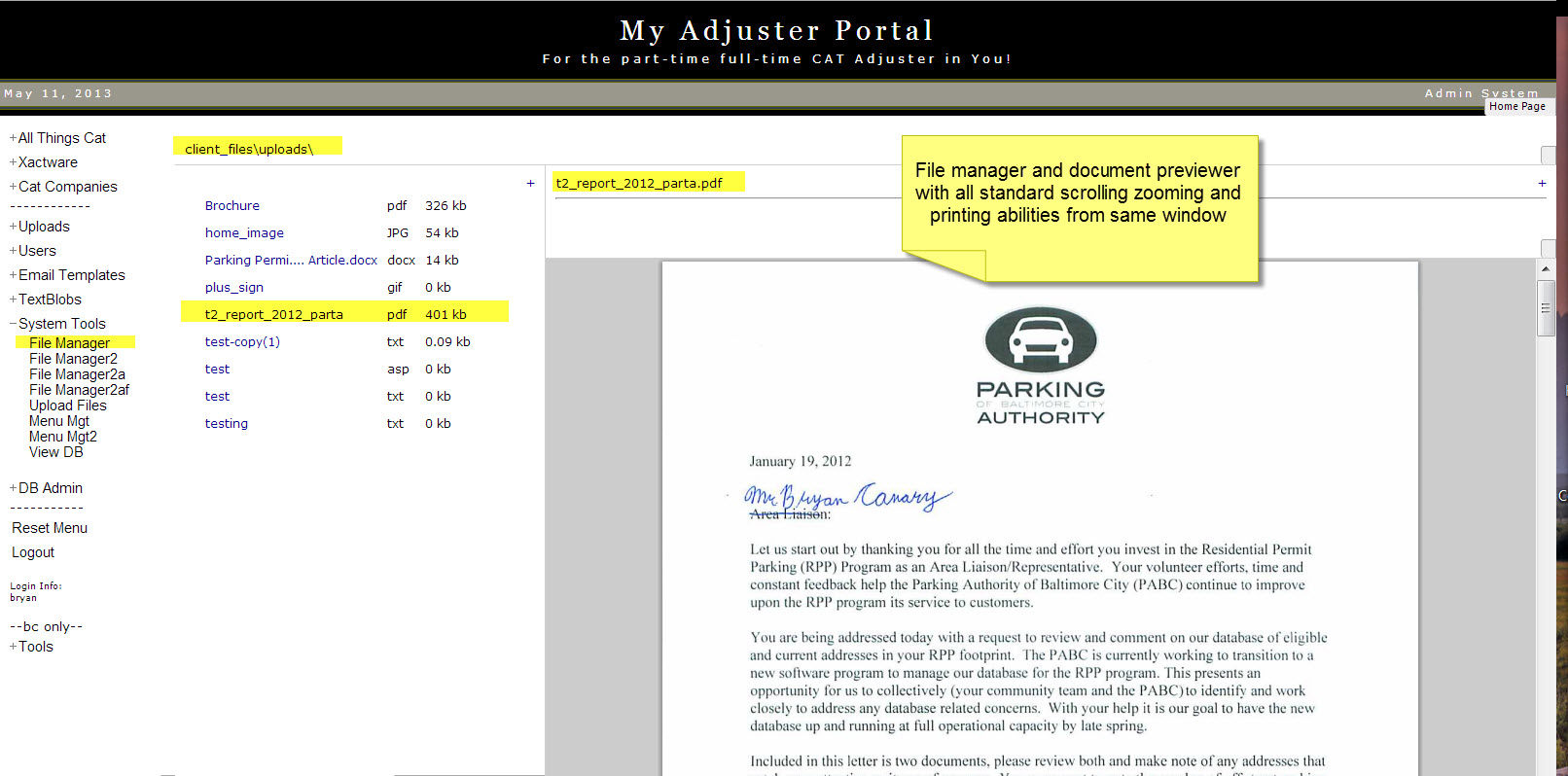
File manager previewing image (gif, jpg, tiff, png)
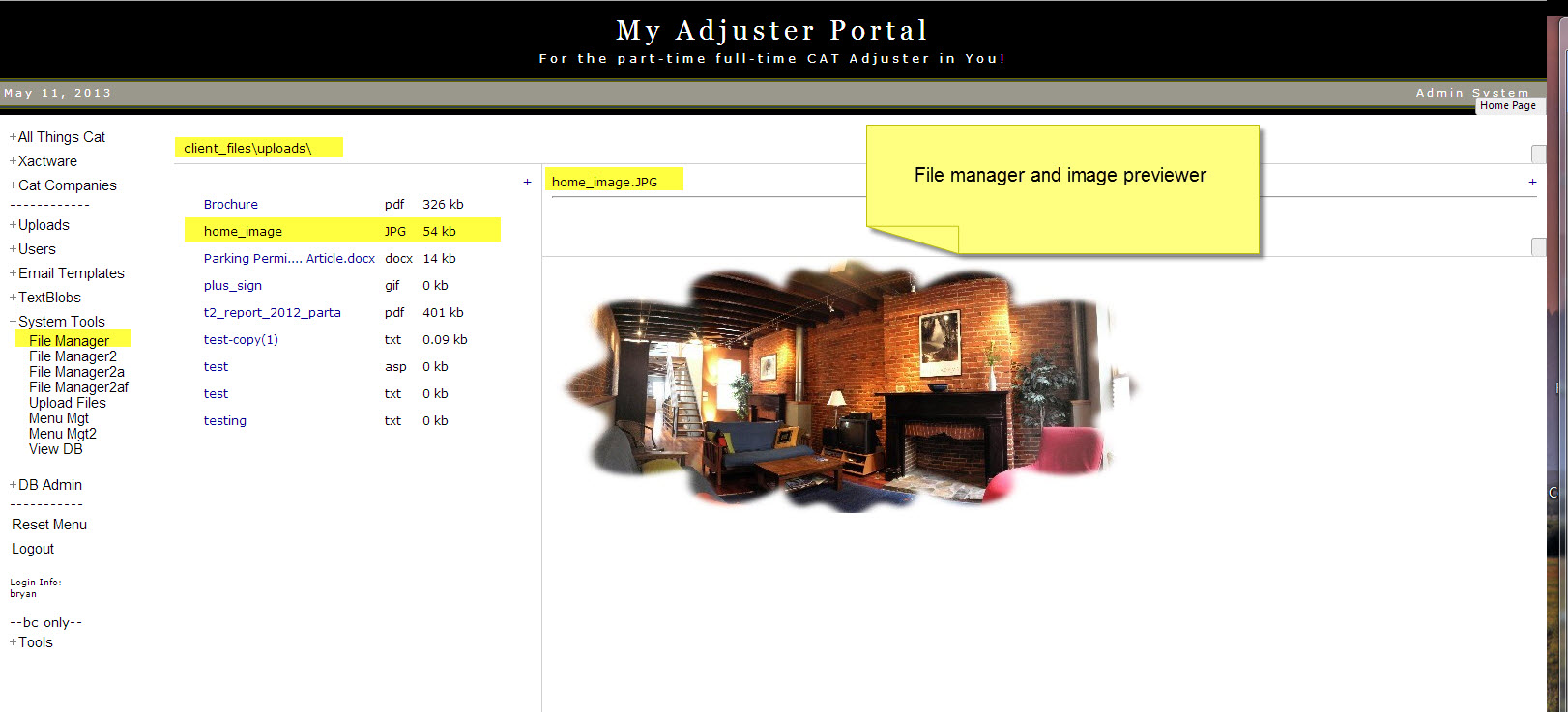
== Dynamic Menu Systems ==
I've developed dynamic menu systems that enables users and admins to build their own
multi-tiered menu systems. This combined with the file manager with text
editing and previewing capabilities becomes a very powerful system for certain
applications. Below is one of the two screens that enables creation and
manipulation of the menu. The highlighted part of the menu on the left has
been dynamically created, and you can correlate those nodes with the screen (the
non highlited part of the menu is hard coded items such as User Admin, System
Tools etc.
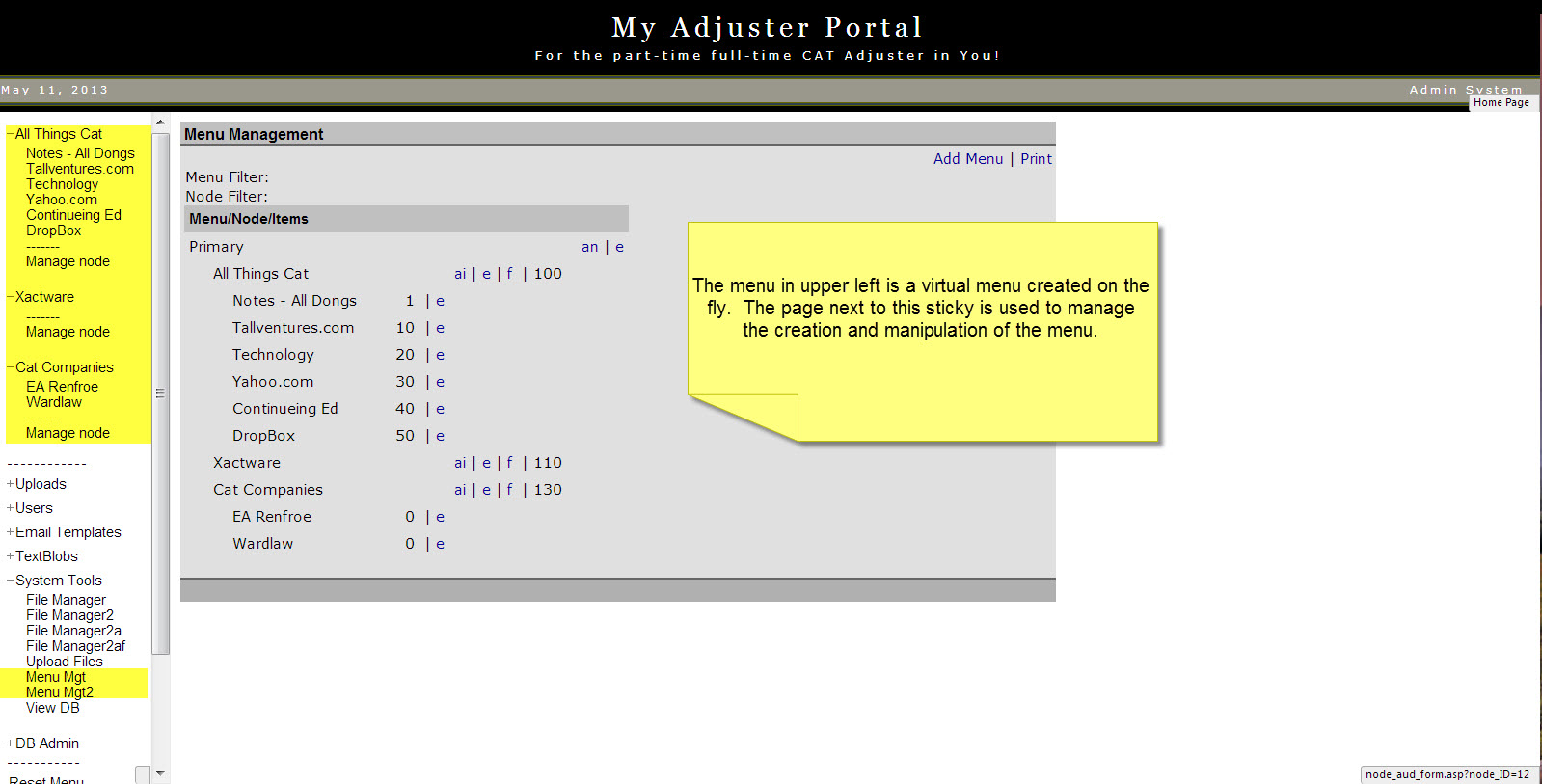
== Keyholder System ==
In addition to my normal username/password authentication with composite key RC4 encryption, I developed a Key-holder
System that allows admins to create private credentials and email a link/url to
users for temporary or permanent access. No personal authentication data
is stored on the servers, the access can be set to expire on a given date, and
the link/url can be stored in favorites or in email for constant one click
authenticated access. The admin has the ability to rekey or deactivate
access with just a few clicks, and all access is logged. All Keyholder
credentials are encrypted with the same level of encryption as the standard
username/pw system. This type of system is exceptional for
granting access for sales presentations and demos as well as for 1 click access
from workstations and mobile devices. Also ideal for any organizations
where having full user name and password info associated with an email address
is just not needed nor desirable.
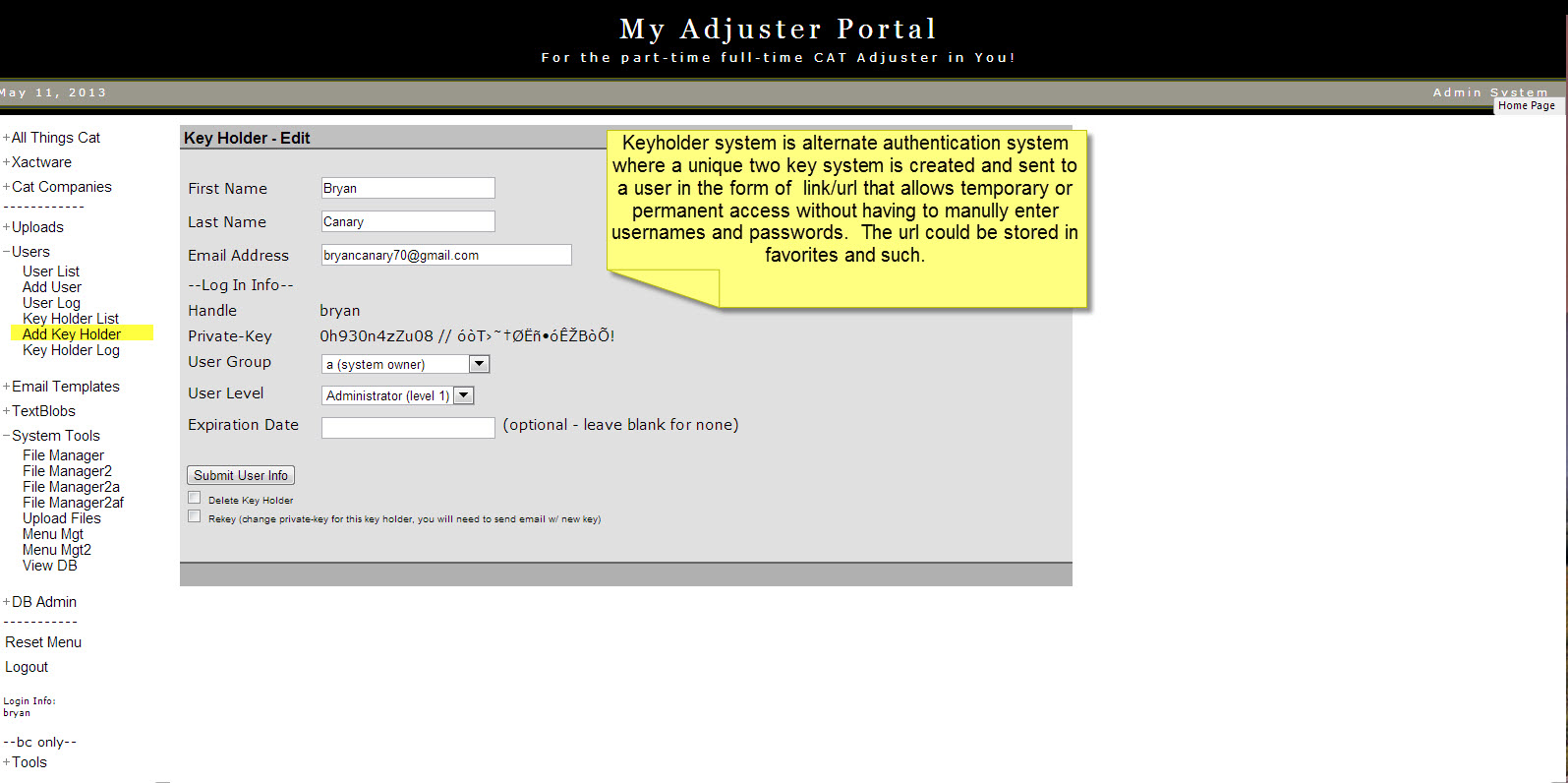
Classic ASP and Frames
A technical note to partners, potential customers and other developers.
I develop business systems with Classic ASP and the use of frames/framesets. A google query on
frames will return oodles of negative static and a search on Classic ASP
will give the impression it is outdated (although since ~2010 there is a growing
energy returning to these roots). To state my position on this matter as clearly as
possible, the level of ignorance on this matter is astounding.
One of the screen shots above shows a window with 8 frames in it. In 1
hour I could teach a talented 6th grader how those frames are laid out and
connected, and how
to manage those various screens and the text based content in them with a simple text editor.
Try doing that in ASP.net or with CSS on a single webpage...I double dare you.... Frames based
business systems utilizing classic ASP can be developed for pennies on the
dollar compared to any other structure or platform (asp.net, ruby on rails, etc). There is NO comparable platform
other than a PHP driven site. One of
the reasons its not seen more or promoted more is that very few people mastered
it and started building heavy duty back end business systems prior to the
introduction of ASP.net...and that totally took the focus off the power of the
system. Work on different business areas in a good frames based
business system can be delegated to many and can be managed with little to no
effort. One of my goals with sharing screen shots of my work is to show-off the power,
simplicity, and cost effectiveness of frames based business systems to a larger
audience. Classic ASP is on a comeback, and when folks see what can be
done with classic asp and frames for business systems, engineers and computer
science professional should gain significant ground back from the creative types
in the development of web based business software.
"Why haven't I heard
this opinion on Classic ASP and frames for 'complex' business systems before? Surely he must be
mistaken..."
1) How many in-house corporate employees are 'really' worried about development costs?
Employees focus on building in job security and/or building skill-sets for their
next corporate opportunity. The more complex and black-boxish, the greater
the job security....the newer the technology, the better chance to make money in
a corporate move. Very complex systems built on simple structures with basic technology is not great for job security nor for
growth opportunities at other companies chasing new technology.
2) How many hourly based consultants and programmers really care about aggregate
development and maintenance costs? As long as they are quoting something
competitive to the competition, that's all that's important. If everyone
is selling the latest technology, and that costs $100k when it could be done
with older technology by talented programmers for $20k..most of those not in the know,
with budgets, will get scared toward newer technology every time. Those
without budgets, will likely make no investment at all. I have been
programming for my own businesses for over a decade. If I could do it any faster
or cheaper, i would have switched.
3) Very few people truly mastered Classic ASP (with best practices and
supportable code structuring in mind) prior to the introduction of ASP.net in
the 2002 time frame. Those that found it's total lack of inherent
structure
overwhelming bailed as did most large corporations that felt they needed a
much more inherent 'structure' for handling distribution of work, code,
security, and employee turnover.
4) Microsoft - if this is such a great platform, why wasn't
it promoted by Microsoft? Why did they introduce ASP.net in 2002ish??
(A) They thought they needed a better system for handling larger,
corporate level, front end websites that needed search engine support (may be
some truth to that...although Obama 2012 campaign was done on a classic asp
site...so maybe just not enough 'talent' back then). (B) Capitalism...there is NO MONEY IN CLASSIC ASP FOR
MICROSOFT. Frontpage 2002 or a text editor and some books (online forums
now), and away you went....where's the money in that??? (C) Microsoft
had a HUGE client-server programmer following from the 90's, and it turned out
most of them were totally clueless in trying to transition over to 'stateless' of web programming.
It's a totally different mindset with far less rules/structure, and many
couldn't make the switch. IMO, ASP.net was developed by client-server
programmers for client-server programmers. Does it make any sense to use a
non-scripted programming architecture to build a scripted output, when scripted
languages existed for doing the job? Some very nice tools and applications
have been built with ASP.net...but at what cost? Costs should be coming
down now, and the look that can be achieved with ASP.net or comparable
technology is very 'smooth'. But for years and years to come, if you need
a 'complex' backend business system, nothing will compare to the cost,
flexibility and maintainability of a Classic ASP, frames based backend business
system.
5) Most folks who still develop in classic ASP are independent consultants
who spend more time making money building applications for small to medium
businesses than they do trying to convince others of how it's benefits.
You can find small references to this in numerous chat rooms by googling
"compare classic asp to asp.net" and look for the few people who support classic
asp. These folks are 'making money' programming.